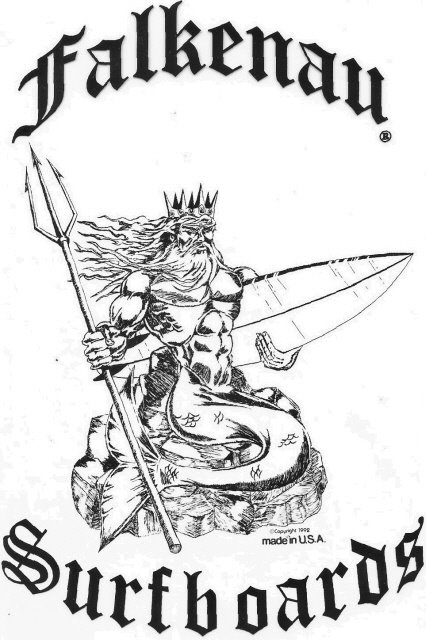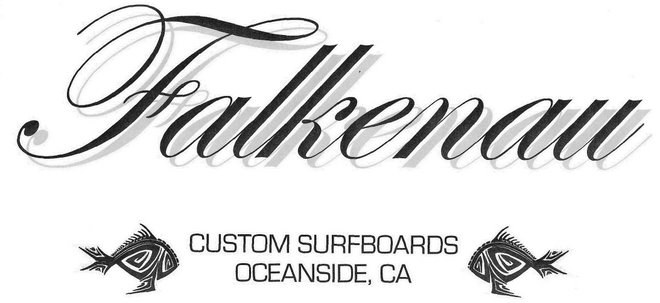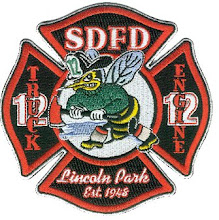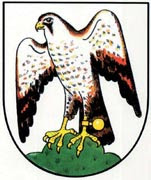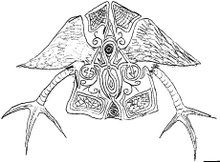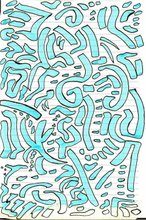Danny Hess Surfboards
Danny Hess is a green carpenter who turned his attention to hollow wood surfboards a few years ago. His professional woodworking skill and his skill as a top-level surfer at
The Making of a Custom Surfboard
A look at how a veteran craftsman builds a board with materials chosen to minimize environmental impact
By Jeffrey Gangemi
For the past eight years, Danny Hess, 31, a veteran surfboard shaper based in

Built to Last
Each Danny Hess surfboard is built using wood, such as poplar, which he chooses because it is grown locally and replanted. Hess says his boards have a lifespan far longer than a conventional surfboard-as long as 10 years as opposed to a few months-because the wood does not fatigue and break down the way the foam in a traditional board does.

Making the Mold
The first step in the process is building what Hess calls the perimeter frame. Each perimeter frame is constructed using a system of molds and templates, which creates the board's rail outline, foil, and rocker. Using pneumatic pressure, Hess creates molds that become the board's outline, and glues cork and wood into the mold that creates the frame.

Trade Secrets
The second step is fashioning the interior frame, which is made from pieces of EPS foam. The process of making a Hess interior frame is proprietary, but it involves shaping the top and bottom contours of the board, and inserting pieces of foam to fill out the open spaces between the perimeter frame.

Serious Recycling
Since Hess uses foam in pieces as opposed to a single blank, he often has extra pieces of foam, which he sends back to the EPS foam company to be recycled and used in future foam blanks.

Giving It Shape
Hess puts all the pieces of the interior and perimeter frame together. He shapes the whole board to create the deck and bottom contours, using a plane and vices.

Organic Outerwear
Next, Hess creates a wood skin for the deck and bottom of the board out of a lightweight, strong wood such as poplar, birch, or vertical grain fir.

In a Vacuum
Hess then bonds the wood skin to the EPS foam and perimeter frame to create a strong, unified structure. The bonding process takes about an hour, and occurs within a vacuum bag, which helps bond the thin wood skin to the interior and external frames. The process of creating a Hess "blank" takes about five times longer than the traditional method.

Hand Shaping
Next, Hess shapes the wooden rails. This is the point in the process where the specific shape of the board is created. It's considered the most critical step for creating a board with optimal performance. The rail-shaping process takes Hess between one and two hours, depending on the shape and size of the board.

Final Steps
Hess sends the board to a local laminator (referred to in the trade as a "glasser") to be coated in a strong, epoxy-based resin. Hess uses epoxy because it emits low volatile organic compounds and doesn't require solvents for cleanup. After it has been glassed, the board is finished and sent to its new owner, who will pay between $1,100 and $1,500 on average.

Hess Surfboards
Danny Hess is a master woodworker and native Californian. He makes beautiful boards from sustainable materials including Poplar, EPS and
Daniel Hess is a true craftsman who designs and builds beautiful, strong, high performance surfboards. His use of recyclable and sustainable materials alongside a design methodology emphasizing the strength and longevity of each surfboard, results in a process that has far less environmental impact than that of a conventional polyurethane / polyester surfboard.
Integrated into the design of each board are materials with a lower environmental impact such as sustainably harvested wood, cork - a renewable resource, EPS foam which is the only recyclable surfboard foam and an epoxy which emits very low Volatile Organic Compounds and does not require solvents for clean up.
Each Hess board uses one half the fibreglass of a conventional surfboard, while remaining far stronger due to its design, the materials used and its construction. And, the use of wood in Hess boards avoids the more rapid fatigue and break down that conventional foam boards suffer, ensuring that each Hess board has a long and useful life.
Hess Pacheco Quad
Pacheco Quad - Beautifully crafted by Danny and inspired by the outlines of Rich Pavel and Manny. Made with sustainable materials.
Hess Pacheco Quad
HESS SURFBOARDS - PACHECO QUAD
Inspired by the beautiful outlines of Rich Pavel and Manuel Caro of Mandala, this quad fin outline utilizes streamlined curves, pronounced hip through the tail, and a more progressive foil and entry/tail rocker. These elements work together to create a board that responds to a full range of surf and really comes to life in ever changing beach break conditions
Rails: Poplar/Cork
Skin: Birch
Fins: Vector/Quad/Twin/Keel
Dimensions: n/a
Weight: n/a
The Bite
Wanna listen to the other flock of seagulls? Grab your graphic-print skinny tie, and head to the beach. But first, paddle on over to SF surfboard shaper Danny Hess. This eco-conscious surfer creates sleek-looking, custom-made boards by hand from reclaimed and sustainably-harvested wood, renewable cork, recyclable foam, and epoxy that doesn't off-gas VOCs. Set up a meeting, and he'll design a board from scratch that fits your needs - shapes range from traditional twin keel fish to maverick guns. And while prices run a few hundred bucks more than your average board, epoxy boards can last up to five times longer than conventional ones, meaning fewer surfboards end up landfills. They're also nontoxic, so you'll be riding new waves without polluting them.
Year Built: 2006
Dimensions: 5'6
Shaper: Daniel Hess
Manufacturer: Hess Surfboards
Location:
Here is my most recent Hollow wood/ EPS interior frame fish. A sleeker outline working with the vector quad fin setup to create a high performance board.Single Concave bottom. Poplar/ cork rails, poplar skin and a 1lb. Eps frame. This one comes in at 7.5 lbs.
Hess Surfboards
Danny Hess surfs  personally manage and making even the strongest surfers sulk all the way home. It’s a fast hollow wave. On big days most people are lucky to even make it outside. There are stories of
personally manage and making even the strongest surfers sulk all the way home. It’s a fast hollow wave. On big days most people are lucky to even make it outside. There are stories of
Danny is not new to green construction methods. As a green building contractor in the Bay Area Danny was familiar with the ins and outs of sustainability. A passion for surfing and woodworking eventually launched him into a full-fledged board building lifestyle. Danny combines perimeter rail technology with EPS spine and ribs and wraps the boards in Epoxy. His boards look like fine furniture. But how do they work? The photos on his site and the ones provided here for us by Erin Kunkle are the proof. From cold

One striking aspect of Hess’s approach is his outright commitment to making a product with environmental ethics in mind. He is clear about the materials he uses and makes sure that longevity is part of his surfboard’s characteristics. One of the first people to respond to our request for an interview, Danny was stoked about our plans to explore sustainably minded surf products. After some time we finally bring you this interview. Check out his boards at www.hesssurfboards.com
Also check the new blog at www.hesssurfboards.blogspot.com
Q. Please tell us a little about yourself and how Hess Surfboards came to be.
A. First off let me thank you for starting this website and inviting me to participate. The evolution of Hess Surfboards has been a pretty organic process. I began making my own boards when I was around 16 and have become more and more committed to it since. My original motivation for making boards is the same now as it was when I began- to make a stronger, longer lasting, more functional surfboard.
My first 30 or so boards were made from traditional PU/PE materials, but when I began making a living as a green builder/ designer about 8 years ago and moving towards a more sustainable way of living, I became very motivated to build a surfboard with far less environmental impact. I spent just about all of my free time when I wasn’t surfing or working on clients homes developing the fundamentals of my technology and method for building these boards. I never doubted that wood was the best material to use. I was very familiar with it, nothing can do what it does and I had established a lot of great sources for sustainably harvested wood through the work I was already doing. The first board took me over 160 hrs to build, and each generation since has taken far less time, been far lighter, and much stronger. It has been a continuous process of trying many different ways of putting all of the elements together to get better results.
 The last couple years I feel that I’ve come to a refined point where I am no longer making these dramatic changes in the construction of each board. I feel very confident that the makeup of each board, as they are now, is what I’ve been working towards for these years. It never occurred to me in the beginning that I would be building these boards for a living. My motivation has always been a personal one. At first I began building these boards for a few local
The last couple years I feel that I’ve come to a refined point where I am no longer making these dramatic changes in the construction of each board. I feel very confident that the makeup of each board, as they are now, is what I’ve been working towards for these years. It never occurred to me in the beginning that I would be building these boards for a living. My motivation has always been a personal one. At first I began building these boards for a few local
Q. In some of my research on surfing forums I have encountered surfers who think of the idea of green surfing as being “hippy lovin, tree huggin, soy drinking” rubbish. Essentially the kind of lackadaisical attitude that mass media assigns the surf world. How do you think this point of view can change? Have you experienced this kind of banter in your work?
A. “Go shape a pickle if you want a green surfboard”. That was always my favorite comment when I first began posting my “green” surfboards and ideas online. A lot of people seem to think that you need to sacrifice a boards’ performance to build a board that has less environmental impact. I think the opposite is true. It is totally possible to build a healthier surfboard that lasts far longer and performs far better than the conventional boards that the majority of surfers are riding today. This has been my main motivation in building and developing the technology that goes into each of my boards.
 When I began selling my wood surfboards for a living, unfortunately clients were not coming to me because they wanted a surfboard that was better for the environment. Now that is the motivation behind a large number of the orders I get. I do think there is a growing level of awareness in the surfing world.
When I began selling my wood surfboards for a living, unfortunately clients were not coming to me because they wanted a surfboard that was better for the environment. Now that is the motivation behind a large number of the orders I get. I do think there is a growing level of awareness in the surfing world.
Q. Part of beginning a dialog about sustainability involves understanding what the concept is exactly and how it relates to surfing. What does sustainability mean to you and how do you apply it in your work?
A. My definition of true sustainability is the unaltered natural environment functioning in perfect balance as nature intended it to be. Examples of this are certainly rare in today’s world, and becoming rarer each day. In my everyday life I try to look at it as an ongoing process of moving towards a greater balance. Actively finding ways to decrease my negative environmental impact in all areas of my life and being thoughtful about the resources I use.
Q. It seems to me that maybe we need a new aesthetic. Your boards are hand crafted and finished beautifully. And the work that goes into them is a lot different than say, buying a close tolerance blank and shaping the rails. Do think that there is a renaissance of craftsmanship and artistry in surfing right now?
 A. There have certainly always been truly great craftsman building surfboards from all sorts of materials and not caring about how much money they will make or how long it will take to make a board. I think that rather than just a renaissance of craftsmanship we are seeing the evolution of the surfboard really beginning to accelerate again. The vacuum caused by
A. There have certainly always been truly great craftsman building surfboards from all sorts of materials and not caring about how much money they will make or how long it will take to make a board. I think that rather than just a renaissance of craftsmanship we are seeing the evolution of the surfboard really beginning to accelerate again. The vacuum caused by
Q. Thanks so much for your time Danny. Any last words or thoughts you’d like to leave our readers with?
A. A wise friend and mentor said to me that a truly great surfboard is one that seamlessly blends art with science. The point where the two become blurred is what I love about a well built hand made surfboard. It is the thing that makes a magic board and what makes a well crafted, hand made surfboard something beyond a product or widget. It is definitely what keeps me motivated to continue improving and developing the boards I am building. Many thanks.
Hess Rail Blend
Future classic: Surfing legend Dan Malloy calls his 5-foot-10 Danny Hess surfboard “the fastest I’ve ever ridden.” And not only is it fast, it’s politically correct: Hess, an
Danny Hess, of Hess Surfboards, has been using wood, expanded polystyrene (EPS), which is recyclable, and an epoxy resin that releases 80 percent fewer VOCs into the air than the standard polyester resin, to make boards for six years. EPS is the most widely used alternative to polyurethane foam, and it is similar to the Styrofoam used to make beach coolers. The boards are as light and even stronger than traditional ones, but some surfers have complained that EPS boards aren’t as responsive to their movements. Hess’s boards are encased in sustainably-harvested or reclaimed wood. “The combination of the materials I use produce the strongest, most functional and environmentally-conscious surfboard I can build right now,” says Hess. While it is an improvement on conventional board-making methods, it’s petroleum-based, so it won’t become a long-term solution. “Chemicals are still involved, and I’m always searching for better alternatives that release fewer toxins into the atmosphere,” Hess says. “What I really want to see is a bio-based, EPS-quality foam.”
Some other woodsmiths and master craftsmen worth checking out…
· Dick Brewer; "Plumeria Surfboards",
· David Falkenau; “Artisan Surf Designs: Falkenau Surfboards & Fins”,
· Daniel Hess; “Hess Surfboards”,
· Paul Jensen; “Surfboards by Paul Jensen”, Lacey, WA; www.hollowsurfboards.com
· Dirk Langer; “Vintage Wooden Surfboards”,
· Roy Stewart; "Power Surfboards";
· Tom Wegener; “Wegener Surfboards”,
